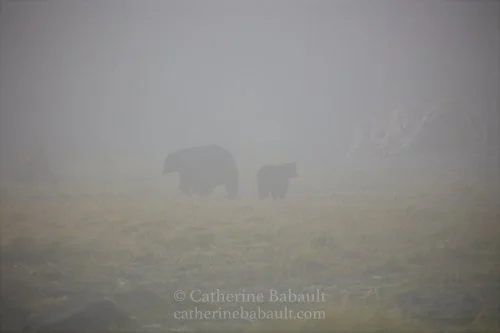When photographing wildlife, I am always aware of my surroundings. I pay attention to sounds, animal calls, tracks, droppings, and any sign that indicates the presence of wildlife.
A few weeks ago, while on a solo trip to photograph bears in an isolated area, I was distracted by a beautiful Savannah sparrow foraging on the beach. The bird was getting close to me so I used a large piece of driftwood to lean over and take photos at eye-level. I was quiet and still so as not to startle the sparrow. After getting a few good shots, I stood up and that's when I heard a commotion right behind me. It sounded like someone or something heavy had tumbled over a big log. I quickly turned around and saw the back of a black bear in the thick bushes. He was about five metres away from me. The panicked bear started running into the bushes as fast as he could. I could follow his direction by the movements in the bushes. At one point, he even bumped into a small tree. Unlike the bear, I was very calm and the situation actually made me smile. Obviously he hadn't noticed my presence until I moved. But it was also a good reminder to me that I can be very close to wildlife without even realizing it. So I'd like to share with you some basic information and signs of black bears.
On Vancouver Island, black bears inhabit forests, grasslands, meadows, intertidal zones, estuaries, river shorelines and urban areas. They eat a wide range of food such as plants, berries, insects, clams, crabs, and fish. Bears are plantigrade, which means they walk on the soles of their feet like humans. The print of their hind foot looks like that of humans. They have five toes like us. These photos show a few signs that you are in bear land: a partially eaten salmon, old scratches on a tree, tracks in the sand, and sandy prints of a front foot next to a hind foot on a wet log.
Stay safe!











